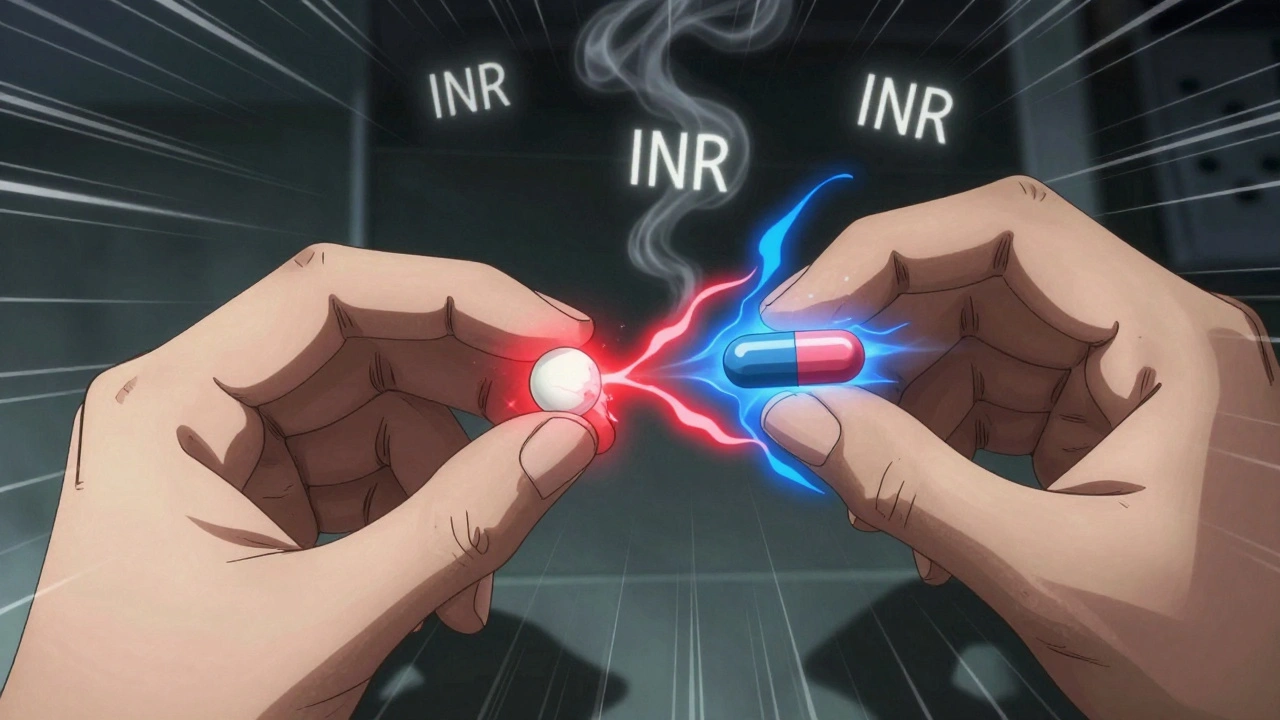Atomoxetine and Elderly Patients: A Special Consideration

Understanding Atomoxetine and Its Use in Elderly Patients
As an aging population continues to grow, it is important for healthcare providers and caregivers to understand the unique challenges and considerations that come with treating elderly patients. One such issue is the use of medications, such as atomoxetine, that may have different effects on older individuals compared to younger populations. In this article, we will explore what atomoxetine is, how it works, and the special considerations that need to be taken into account when prescribing this medication to elderly patients.
What is Atomoxetine and How Does It Work?
Atomoxetine, also known by the brand name Strattera, is a medication primarily used to treat attention deficit hyperactivity disorder (ADHD) in children, adolescents, and adults. Unlike many other ADHD medications, atomoxetine is not a stimulant and is classified as a selective norepinephrine reuptake inhibitor (NRI). It works by increasing the levels of norepinephrine in the brain, which helps to improve focus, attention, and impulse control.
Although atomoxetine is most commonly prescribed for ADHD, it has also been used off-label to treat other conditions, such as anxiety, depression, and cognitive decline in older adults. However, as with any medication, it is crucial to weigh the potential benefits against the risks and side effects, especially when considering its use in elderly patients.
Atomoxetine and Age-Related Cognitive Decline
As we age, our cognitive abilities naturally decline, which can lead to difficulties with memory, attention, and other mental functions. Some research has suggested that atomoxetine may have potential benefits in addressing these age-related cognitive changes. Studies have shown that atomoxetine can improve attention and executive function in elderly patients, which could potentially help with daily tasks and overall quality of life.
However, it is important to note that the research on atomoxetine and cognitive decline is still in its early stages, and more studies are needed to determine its true effectiveness and safety in this context. Healthcare providers should carefully consider the available evidence before prescribing atomoxetine for cognitive decline in elderly patients.
Potential Side Effects and Risks of Atomoxetine in Elderly Patients
As with any medication, atomoxetine comes with potential side effects and risks that need to be considered, especially in elderly patients who may be more susceptible to adverse reactions. Some common side effects of atomoxetine include dry mouth, constipation, nausea, dizziness, and sleep disturbances. While these side effects may be manageable in younger populations, they can be particularly problematic for older individuals who may already be dealing with other age-related health issues.
Additionally, there are more serious risks associated with atomoxetine use, such as increased blood pressure and heart rate, liver damage, and suicidal thoughts. Elderly patients may be at a higher risk for these complications due to age-related changes in their cardiovascular and liver function. It is crucial for healthcare providers to closely monitor elderly patients taking atomoxetine and to adjust dosages or discontinue the medication if necessary.
Drug Interactions and Atomoxetine in Elderly Patients
Elderly patients often take multiple medications for various health conditions, which can increase the risk of drug interactions. Atomoxetine has the potential to interact with a number of medications, including antidepressants, antihypertensives, and medications that affect liver function. These interactions can lead to increased side effects or reduced effectiveness of the medications involved.
It is essential for healthcare providers to carefully review the medication list of elderly patients before prescribing atomoxetine and to be vigilant in monitoring for any potential drug interactions. Patients and caregivers should also be educated about the possible interactions and encouraged to report any new or worsening symptoms to their healthcare provider.
Conclusion: Weighing the Pros and Cons of Atomoxetine Use in Elderly Patients
While atomoxetine may offer potential benefits for elderly patients with ADHD or cognitive decline, its use must be carefully considered and monitored due to the increased risk of side effects and drug interactions in this population. Healthcare providers should weigh the pros and cons of this medication on a case-by-case basis and involve patients and caregivers in the decision-making process. By taking a thoughtful and individualized approach, we can help to ensure the safe and effective use of atomoxetine in elderly patients.






Comments
Raja M
May 20, 2023 AT 23:43I get why folks are nervous about giving atomoxetine to seniors, but we can't just write it off because of age. The drug's mechanism-boosting norepinephrine-can actually help with the attention lapses many older adults face. Sure, the cardiovascular side‑effects are a real concern, especially with the frail heart, so we need to start low and go slower than we would with a youngster. Monitoring blood pressure and liver enzymes isn’t just a checkbox; it can be the difference between a safe trial and a dangerous spill. Bottom line: with vigilant dosing and regular check‑ups, atomoxetine can be a useful tool, not a forbidden fruit.
Rob Flores
May 21, 2023 AT 00:33Oh joy, another miracle drug for the geriatric crowd-because what the world really needed was more neurotransmitter tinkering in the twilight years. The literature? A handful of small, under‑powered studies that make you wonder if the authors were looking for a grant more than a cure. And let’s not forget the cocktail of meds seniors already juggle; adding a selective norepinephrine reuptake inhibitor is practically an invitation for chaos. Of course, the hype will get loud until the side‑effect profile screams louder. So, unless you enjoy watching clinicians dance on a tightrope, maybe stick to the tried‑and‑true.
Shiv Kumar
May 21, 2023 AT 01:23While the pharmacodynamics of atomoxetine are well‑characterised, the translation of these effects to an older demographic remains tentative. Evidence suggests modest improvements in executive function, yet the sample sizes are insufficient to draw definitive conclusions. Moreover, the poly‑pharmacy context frequently encountered in geriatric practice amplifies the risk of adverse drug interactions. Therefore, clinicians ought to adopt a cautious, individualized approach, weighing the modest potential gains against the heightened safety concerns. In short, prescribe judiciously, monitor relentlessly.
Ryan Spanier
May 21, 2023 AT 02:13I appreciate your candor, Rob, and while the data may be limited, it's important to acknowledge the nuanced benefits that some patients experience. A measured, case‑by‑case assessment can help identify those who might truly gain from atomoxetine, especially when non‑pharmacologic strategies fall short. Regular cardiovascular monitoring and dose titration can mitigate many of the risks you highlighted. Collaboration between prescribers, pharmacists, and caregivers ensures that any emerging side‑effects are caught early. Ultimately, a balanced perspective-recognising both potential and pitfalls-serves our elderly patients best.
Abhinav Moudgil
May 21, 2023 AT 03:03Let’s seize this opportunity to illuminate a path that many clinicians hesitate to tread! Atomoxetine, when wielded with precision, can act like a bright lantern in the fog of age‑related attentional decline. Imagine a senior patient who, after a cautious titration, finds herself navigating daily tasks with renewed focus-her confidence soaring like a sunrise over a calm sea. Of course, this brilliance must be tempered with diligent monitoring of blood pressure, hepatic function, and drug‑drug interactions. By coupling this pharmacologic ally with cognitive training and supportive counseling, we craft a holistic regimen that respects the complexity of aging while championing functional vitality.
Miah O'Malley
May 21, 2023 AT 03:53When we contemplate the use of atomoxetine in the twilight of life, we are forced to confront the delicate dance between neurochemical modulation and the inexorable march of time.
The brain, even in its most seasoned form, remains a malleable organ, capable of subtle rewiring when presented with the right catalyst.
Norepinephrine, the messenger at the heart of atomoxetine's action, does more than sharpen attention; it fuels the very spark of curiosity that keeps the mind engaged.
Yet, this same spark can flutter precariously if the surrounding physiological environment-blood pressure, hepatic capacity, cardiac rhythm-cannot sustain its glow.
Hence, the clinician becomes a steward, balancing the promise of enhanced cognition against the potential for physiological turbulence.
The literature, though still nascent, offers glimpses of improved executive function in older cohorts, suggesting that the drug may indeed lift the veil of mental fog.
But these studies are frequently small, their conclusions tentative, reminding us that enthusiasm must be tempered with scientific humility.
What is perhaps most compelling is the anecdotal chorus of patients who report a rekindled ability to pursue hobbies, manage finances, or simply enjoy conversation without the veil of distraction.
Such narratives underscore a profound truth: beyond scores and scales, the lived experience of restored agency can be transformative.
Nevertheless, we must not ignore the shadowed side-elevated blood pressure, hepatic strain, and the specter of suicidal ideation-that looms over many pharmacologic interventions in the elderly.
A rigorous monitoring regimen, including baseline cardiovascular assessment, periodic liver function tests, and open dialogue about mood changes, becomes non‑negotiable.
In practice, this translates to a collaborative model where physicians, pharmacists, caregivers, and the patients themselves form a vigilant circle.
Each stakeholder brings a unique lens: the physician with medical expertise, the pharmacist with drug‑interaction acumen, the caregiver with daily observations, and the patient with personal goals.
When these perspectives coalesce, the risk of adverse events diminishes, and the therapeutic window widens.
Thus, atomoxetine can be viewed not as a blanket solution, but as a nuanced instrument-one that, when tuned correctly, can amplify the symphony of an aging mind.
In the final analysis, the decision to prescribe rests on a compassionate weighing of potential benefit, individual health status, and the invaluable desire of many seniors to remain mentally vibrant for as long as possible.
Bradley Allan
May 21, 2023 AT 04:43But oh! The heart of the matter thunders louder than any neurotransmitter-beware the silent storm!
Kyle Garrity
May 21, 2023 AT 05:33Thanks for the balanced perspective, it's exactly what we need.